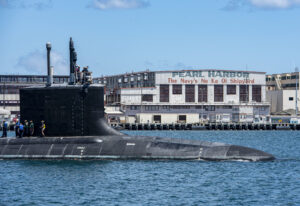
The Navy recently named the Pearl Harbor Naval Shipyard and Intermediate Maintenance Facility (PHNSY & IMF) as the Naval Supervising Authority (NSA) and Lead Maintenance Activity (LMA) for a new Western Australian-based submarine force. In this role, the Pearl Harbor yard will support the Navy establishing Submarine Rotational Force-West (SRF-W), the main part of phase one of the AUKUS pillar one plan. Vice Adm. Bill Galinis, commander of Naval Sea Systems Command, named PHNSY & IMF to this role on…

 By
By 











